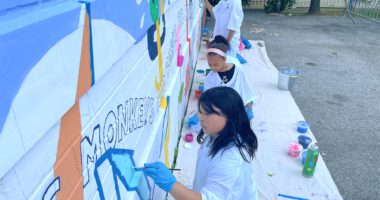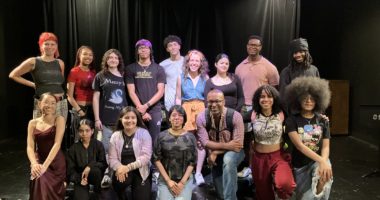Recently the third installment of the Teaching Artist Training & Internship Program (TATIP) 2015-2016 fall workshops took place at Studios 353 in midtown. The trainees gathered to explore a variety of topics ranging from program assessment and age-appropriate lesson planning to the Common Core. This workshop was led by Patti Chilsen, as Renée Watson is out on book tour this month promoting her new novel This Side of Home. Congratulations Renée!
We started with our usual graffiti walls, but with a spin on it by lining the room with wall charts provided the week before, covering inquiry questions, lesson objectives, and other components of a strong lesson plan. The participants were asked to put their thoughts on each subject down on a post-it and stick it to each wall chart. This not only gave the participants a means to reflect on and connect with what was done the prior week and gauge their own level of understanding of the steps in the moment, but also the facilitators were able to see where the experience level was in the room and how to best approach each topic. It provided a model of capturing student responses and became a model later in the afternoon for “informal assessment”, another topic we would cover later in the day.
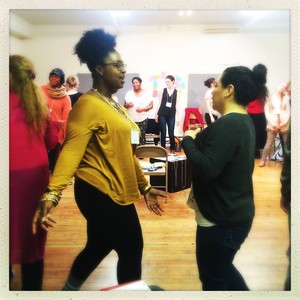
After, we took a look at our own creative processes as artists, which can be one of the most difficult things to translate in the classroom. Professional artists often spend years of trial and error, refining their processes, figuring out what works and what doesn’t. However, we don’t have years in the classrooms with our students, often only months or weeks. So it is important for Teaching Artists to thoroughly explore and understand their own creative process in order to best instruct their students and bring artistic exploration into the classrooms.
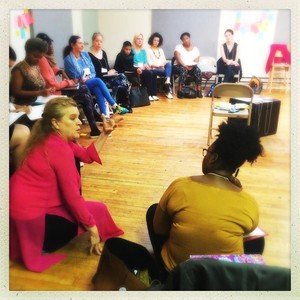

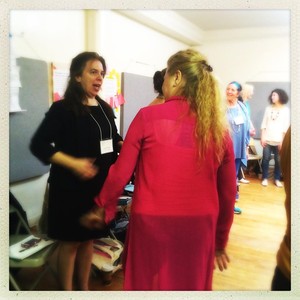

The room was split into groups by art form: writers, dancers, musicians, visual artists and theatre artists, each working together to compile lists of resources they might take away to use in the classrooms. These resources, inspired by their individual creative processes, included artists, texts, and materials any number of the trainees could use to facilitate a lesson. Then, the groups brainstormed how they could use these resources in the classroom, creating outlines for lesson plans and activities they might want to implement.
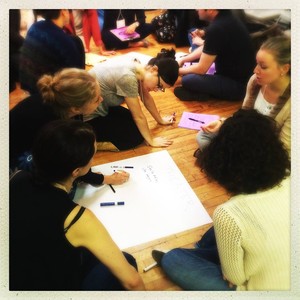

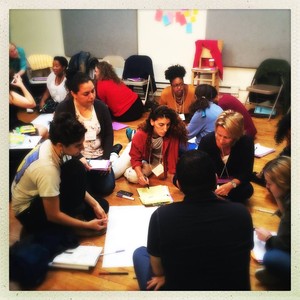

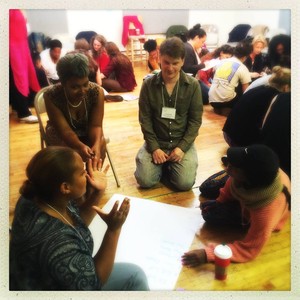

Many questions arose on how to best utilize these resources with different age groups, which fed into the next phase of the day: Exploring Stages of Intellectual Development in Children & Teenagers. Using texts provided by CWP facilitators, each group was assigned an age bracket and charged with the task of altering their lesson plan activities to address that demographic.
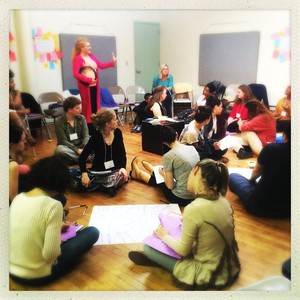

Like any well scaffolded lesson, these activities set the ground work for the most challenging part of the day: Navigating the Common Core. The Common Core Standards can be, to creative thinkers and artists, one of the most seemingly limited and dull parts of creating a lesson that integrates into a school curriculum. But the trainees were up for the challenge! We reviewed the various components of the Common Core “Anchor” Standards, focusing especially on literacy and critical thinking skills, highlighted through the four main categories of Reading, Writing, Speaking & Listening, and Language. The groups made connections to what they had already devised and explored ways to enhance their mock lesson plans by using the Common Core “Anchor” Standards.




Last of all, we segued into focusing on Student Assessment, formal and informal methods to consider utilizing in the classroom. This is an essential tool for Teaching Artists to be familiar with, to recognize when they are already using it to judge how the students are grasping what they are teaching, and to develop new ways to integrate and make use of it.


During the final part of the day, the trainees were assigned partners for the Lesson Plan Presentations to be implemented in the Day Four workshop on November 21st. They were given lab time to begin forming a lesson plan with their partners that they will present in front of and alongside their TATIP classmates. In our next installment, the trainees will present these lessons and gain feedback on what the strong points were and how they can yet improve them. Stay tuned to see what exciting work they came up with!

